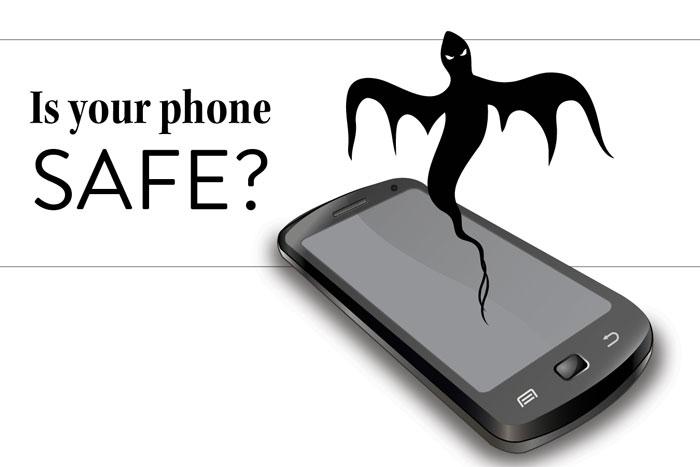Protecting What's in Your Pocket

National Cyber Security Awareness Month wraps up with tips for securing your mobile device
by Tony Moore
It’s bad enough that hackers are coming from all sides to get at the data on your computer, but here they come again, this time on your smartphone and tablet.
Most people are aware of—either from someone else or through personal experience—malware or virus threats against their personal computers. But tablets and smartphones are increasingly being targeted by malicious software, so Week 4 of National Cyber Security Awareness Month (NCSAM) is dedicated to helping you keep safe while on the move.
Passcodes
First, if you pick up your phone and can swipe right into it without a password, you need to fix that. (Everything here goes for tablets as well.) Encrypting your device via a password, passcode, pattern lock or the like is the first and easiest thing any user can do to protect its contents. Every operating system—from iOS to Android to Windows—has this function available, so check your settings and set up that first line of defense:
- Android: Settings > Security > Screen lock
- iPhone: Settings > Touch ID & Passcode
- Windows: Settings > Lock screen
Many phones have fingerprint scanners and facial-recognition software now, so if you find traditional passwords and codes a little passé, these options are at hand as well.
Security software
Next up, you should have some kind of security software protecting your phone at all times. This software not only protects against malware and viruses, but full security suites also provide some useful additional functionality, such as:
- backing up critical data
- finding a lost or stolen device
- remotely deleting personal data
- and alerting you if you visit a site that may be unsafe.
There are several mobile security apps available, often for free, so get into your app store and download one ASAP if you don’t already have one installed. Just search “antivirus” or “mobile security,” then install one and run an initial scan. From then on, the app will operate in the background, keeping your data safe.
Downloading apps
On a related note, it’s not a great idea to ever install an app from anywhere but one of the app stores. The apps available in the stores run by Google, Apple and Microsoft are all vetted to be safe, whereas if you download apps from the Internet at large, nefarious elements could also be downloaded straight onto your phone.
For more on all of this, LIS is hosting two infosessions as October comes to a close:
- Oct. 27, 12 p.m., Tome 115: Math/CS Chat with Jeff Caton, “The Three C’s of Cyberspace: A Holistic View of Cybersecurity Issues." Caton is a former U.S. Army War College Fellow and Department of Defense consultant.
- Oct. 28, 4:30 p.m., Biblio Café: FaculTea with John MacCormick, associate professor of computer science, "Why Are Password Rules So Annoying?"
Both events are free and open to the Dickinson community, and attendees earn financial or intellectual wellness credit for attending.
Also, the phishing quiz will be available to take until Oct. 31, so get in there and test your knowledge. By scoring a 20 or higher, you earn a chance to win a Microsoft Surface 3 or a Best Buy gift card. The drawing will take place on Monday, Nov. 2, and the names of the winners will be posted on the quiz page at 2 p.m. that same day.
Learn more
- NCSAM Week 3: "At the Wrong End of a Lure"
- NCSAM Week 2: "First Line of Defense"
- NCSAM Week 1: "Click Carefully"
- Library & Information Services
- Latest News
Published October 23, 2015